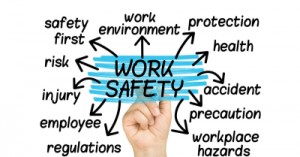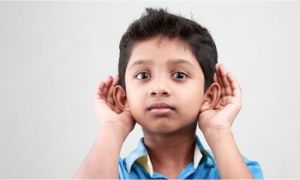Providers of childcare care or early childhood educational services are required to get their service rated for quality by regulatory authorities. Quality ratings are provided after assessments against the seven quality areas outlined in the National Quality Standard or NQS. If your service has been rated ‘Working Towards’, here it what means and what you can do to improve your rating.
Working towards the National Quality Standard (NQS) set by the Australian Children’s Education & Care Quality Authority (ACECQA) involves continuous improvement in early childhood education and care services. Here are some key steps and strategies to help you align with the NQS:
1. Understanding the NQS
- Quality Areas: Familiarize yourself with the seven quality areas of the NQS, which include educational program and practice, children’s health and safety, physical environment, staffing arrangements, relationships with children, collaborative partnerships with families and communities, and governance and leadership.
2. Self-Assessment and Reflection
- Self-Assessment Tool: Use ACECQA’s self-assessment tool to evaluate your current practices against the NQS standards. This helps identify strengths and areas for improvement.
- Reflective Practice: Encourage educators to engage in reflective practice, regularly reviewing and discussing their teaching methods and interactions with children.
3. Quality Improvement Plan (QIP)
-
Develop a QIP: Create a Quality Improvement Plan that outlines your goals, strategies, and actions for improving quality in your service. This plan should be regularly updated and reviewed.
-
Involve Stakeholders: Engage staff, families, and the community in the development and review of the QIP to ensure it reflects the needs and aspirations of all stakeholders.
4. Professional Development
-
Ongoing Training: Invest in ongoing professional development for educators to keep them updated on best practices and new research in early childhood education.
-
Mentoring and Support: Provide mentoring and support for educators to help them implement changes and improve their practice.
5. Engaging Families and Communities
-
Collaborative Partnerships: Build strong partnerships with families and the community to support children’s learning and development. This can include regular communication, family events, and community projects.
-
Cultural Safety: Incorporate cultural safety practices, particularly those that respect and include Aboriginal and Torres Strait Islander cultures.
6. Monitoring and Evaluation
-
Regular Reviews: Conduct regular reviews of your practices and policies to ensure they align with the NQS standards. Use feedback from families, staff, and children to inform these reviews.
-
Documentation: Keep thorough documentation of your practices, assessments, and improvements. This is essential for demonstrating compliance during assessments and ratings.
7. Creating a Positive Environment
-
Safe and Stimulating Spaces: Ensure that the physical environment is safe, welcoming, and conducive to learning. This includes both indoor and outdoor spaces.
-
Wellbeing Focus: Prioritize the wellbeing of children and staff by promoting healthy practices, emotional support, and a positive atmosphere.
Understand The Basics
According to NQS, regulatory authorities are supposed to grant quality ratings to services in seven areas which are educational program and practice (Quality 1), children’s health and safety (Quality 2), physical environment (Quality 3), staffing arrangements (Quality 4), relationships with children (Quality 5), collaborative relationships with families and communities (Quality 6) as well as Governance and leadership (Quality 7).
The rating Working Towards National Quality Standard is given to those services that provide a safe education and care program but need improvement in one or more areas. Suppose services meet the National Quality Standard in all seven quality areas. In that case, they are given a Meeting National Quality Standard those services that perform better than the requirements of the National Quality Standard in at least four of the seven quality areas, with at least two of these being quality areas 1, 5, 6, or 7 are given a rating of Exceeding National Quality Standard.
What It Really Means
An analysis of the 27th NQF Snapshot showed that 3100 services were rated Working Towards NQS. Around 1000 services or 31% were rated Working Towards NQS based on not meeting three or fewer elements of quality, with almost 300 of these services not meeting just a single element. At the other end of the spectrum, more than 300 services or 11% were rated Working Towards NQS for not having met 20 or more elements of quality. This shows that a rating of Working Towards NQS should not be considered a failure – firstly because the quality assessment and rating process is not designed as a pass-fail system adjudicated by regularity bodies. Instead, it should be regarded as an opportunity for reflection and continuous improvement.
The second reason why Working Towards NQS is not a failure is because the rating also recognises high performance. This clear from the fact that almost 300 services rated Working Towards NQS overall in 27th NQS Snapshot received a rating of Exceeding NQS for one or more of the seven quality areas.
Opportunity For Improvement
The main purpose of the ‘Working Towards’ rating is to indicate to the service the quality areas and elements it needs to work on. And that the NQF supports the process is clear from the fact that it undertook 8000 reassessments, after which as many as two-thirds of services rated Working Towards NQS improved their quality rating. All this underlines the commitment that NQS has to improve early education and care services quality through its assessment and rating process.
By focusing on these areas, you can work towards meeting and exceeding the National Quality Standard, providing high-quality education and care for young children.
Further Reading
How To Achieve Each Quality Area Within The NQS - The following is a list of all achievements under each 7 Quality Areas that can help services identify if they are achieving within each area. It also includes documentation evidence required to support each element. Please follow the links to read through each Quality Area.
NQS Quality Areas Posters - The following National Quality Areas Posters include a definition of the Quality Area and the standards for each. These standards are high-level outcome statements. These can be displayed within the service and for Educators to use as a quick reference guide.
The National Quality Standard and Elements - The following is a quick reference guide for educators that lists the standards and elements that apply to each quality area (as of 01 Feb 2018).
Services Rated Working Towards NQS Offered Free Support Program - Eligible services in NSW rated Working Towards the National Quality Standard (NQS) are being given an opportunity to participate in a Quality Support Program.
Reference:
What Does It Mean to Be Working Towards The NQS, ACECQA







 As an Educator in Australia, your pay rate falls under the Children’s Services Award 2010. This award states the minimum amount that an employer can
As an Educator in Australia, your pay rate falls under the Children’s Services Award 2010. This award states the minimum amount that an employer can When working as a qualified Early Childhood Teacher (with a university degree) within a service, your rate of pay will come from the Educational Services
When working as a qualified Early Childhood Teacher (with a university degree) within a service, your rate of pay will come from the Educational Services When working as a Diploma Qualified Educator your pay rate is from the Children's Services Award 2010. This Award states your minimum rate of pay
When working as a Diploma Qualified Educator your pay rate is from the Children's Services Award 2010. This Award states your minimum rate of pay When working as a Cert 3 Qualified Educator, your pay rate is from the Children's Services Award 2010. This Award states your minimum rate of
When working as a Cert 3 Qualified Educator, your pay rate is from the Children's Services Award 2010. This Award states your minimum rate of Educational Leaders play a crucial role in their early childhood service by ensuring that the educational program aligns with best practices and supports the holistic
Educational Leaders play a crucial role in their early childhood service by ensuring that the educational program aligns with best practices and supports the holistic In early childhood education and care, ratios are more than a technicality—they are a frontline safeguard. Every child deserves responsive supervision, emotional connection, and developmental
In early childhood education and care, ratios are more than a technicality—they are a frontline safeguard. Every child deserves responsive supervision, emotional connection, and developmental With the new national child safety reforms kicking in on 1 September 2025, early childhood services like yours have a real opportunity to lead the
With the new national child safety reforms kicking in on 1 September 2025, early childhood services like yours have a real opportunity to lead the Here’s a comprehensive Mobile Phone and Smart Watch Policy tailored for early childhood education and care (ECEC) services in Australia, aligned with the latest 2025
Here’s a comprehensive Mobile Phone and Smart Watch Policy tailored for early childhood education and care (ECEC) services in Australia, aligned with the latest 2025 The Sea of Fish Challenge is a national initiative that invites children, educators, families, and communities to create and display fish artworks as a symbol
The Sea of Fish Challenge is a national initiative that invites children, educators, families, and communities to create and display fish artworks as a symbol Across the early childhood education and care sector, educators are sounding the alarm: current staffing ratios are insufficient to deliver safe, meaningful, and developmentally appropriate
Across the early childhood education and care sector, educators are sounding the alarm: current staffing ratios are insufficient to deliver safe, meaningful, and developmentally appropriate


